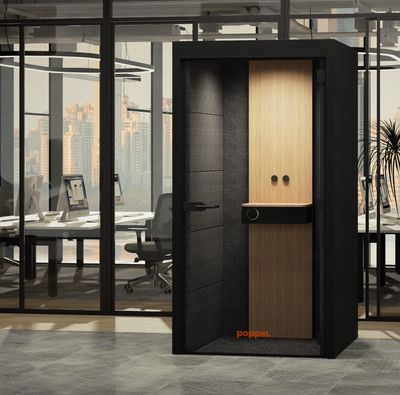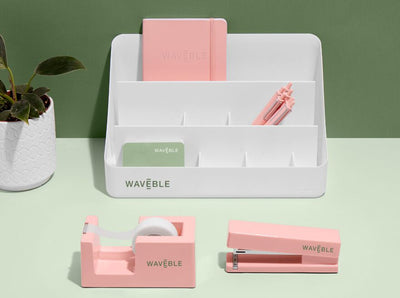
Achieving Hybrid Happiness: Four Rules for a Successful Hybrid Work Policy
A successful hybrid work routine requires more than just mandating a return to office. Find out how to create an office your employees are happy to return to.
Transitioning to a hybrid work routine can be challenging, both for employees and employers. If you find yourself struggling to establish a productive and harmonious hybrid work environment, it's time to reassess your approach. Simply designating specific days for employees to be present in the office without considering their needs and aligning the office environment with your goals is unlikely to produce positive results.
1. Be purpose-driven: Align your physical spaces and policies with your company's goals, employees' needs, and corporate culture.
2. Strike a balance: Seek equilibrium in your approach by reevaluating PTO policies, office/home balance, and work mode balance based on employees' roles and responsibilities.
3. Bring clarity: Clearly communicate company policies and provide the rationale behind them to foster understanding and support among your teams.
4. Create continuity: Develop tools and best practices that facilitate seamless transitions between the home office and the company office.
By embracing these rules, you can transform your office into a representation of purpose, balance, clarity, and continuity, ensuring a successful hybrid work routine for everyone involved.
To set the foundation for a thriving hybrid work environment, you must align your office norms with your company's goals, employees' needs, and company culture. Do so by designing your office with purpose:
1. Start with your vision: Begin by picturing your company's future for the next three years and design your physical space accordingly. Create an environment that reflects and supports your long-term goals.
2. Accommodate work modes: Consider the roles and responsibilities of your employees and design your office space to cater to different work modes. Provide areas that facilitate focused work, collaboration, brainstorming, and creativity.
3. Cultivate company culture: Your office design should foster the desired company culture. Culture varies from company to company. An ad agency, for example, should look to create spaces to welcome and pitch to clients, while a tech startup would make better use of a setup that encompasses personal workstations and casual brainstorm spaces.
4. Consider remote employees: Ensure that your physical spaces support remote employees' needs, such as providing suitable acoustics for virtual meetings and optimizing technology for seamless remote collaboration.
A balanced approach to hybrid work is essential to maintain employee satisfaction and productivity. Consider the following factors when designing your office and policies:
1. Mix functional and freeform spaces: Strike a balance between highly functional work areas equipped with necessary technology and more flexible spaces that can adapt to various work modes. Provide adaptable furniture and areas that can accommodate both individual and group work.
2. Create 'me' and 'we' spaces: Designate areas for individual work, small group collaboration, and larger group communications. Equip your office with private work and meeting spaces in a snap with our PoppinPod Om and Kolo office meeting pods.
3. Foster collaboration and socialization: Differentiate between spaces designed for collaboration and those intended for socialization. Plan the layout and location of these spaces strategically to encourage interaction among employees from different departments.
To ensure that your hybrid work policies are effectively implemented, it is essential to provide clear and comprehensive communication.
1. Communicate company policies clearly: Decide on a hybrid work policy that suits your workforce. If you have a meeting-heavy culture that requires lots of in-person collaboration, you’ll probably want your employees to spend more days in the office than at home. If your company or department is centered around solo work, perhaps employees only need to come in once or twice a week to make the most out of the office environment. Make sure your hybrid work policies are transparent and easily accessible. Clearly outline expectations, guidelines, and the underlying reasons behind each policy.
2. Bring clarity with a curated assortment of collaboration spaces: If collaboration and connection are key objectives of in-office work, design your office space to reflect and support these goals. Be sure to provide the proper set-up for collaboration and connection with functional furniture like our Series A Scale Table with Meeting Chairs and Block Party Lounge.
Seamless transitions between the home office and the company office are critical for a successful hybrid work routine.
1. Establish an operating rhythm: Create a consistent routine that aligns employees' behaviors and establishes a sense of flow. Consider factors such as working hours, required in-office days, and the inclusion of remote employees in team-building initiatives.
2. Make the office feel like home: Incorporate "resimercial" design elements to create a comfortable and welcoming office environment. Our QT Privacy Collection easily creates cozy, partially enclosed spaces where employees can relax and work privately. Bring in creature comforts like cozy rugs, art, and plants to make your office space feel more inviting.
3. Ensure home office functionality: Support employees' work-from-home experience by equipping them with the necessary furniture and tools. Provide employees with a well-furnished Anchor Space within the office. Equip these personal spaces with our Raise Adjustable Height Desks and Maxwell Task chairs to ensure ergonomic bliss. Items like our Dream Desk Set and Stow File Cabinet can be provided to employees for both home and in-office use.
By following our four rules for a successful hybrid work routine— being purpose-driven, striking a balance, bringing clarity, and creating continuity— you can create an environment that fosters productivity, satisfaction, and harmony. Align your physical spaces and policies with your company's goals, maintain a balanced approach in office design and policies, communicate company policies clearly, and facilitate seamless transitions between home offices and the company office.
Embrace this new framework and transform your office into a physical representation of purpose, balance, clarity, and continuity. Achieve hybrid happiness and reap the benefits of a successful hybrid work routine for your organization and its employees.



















